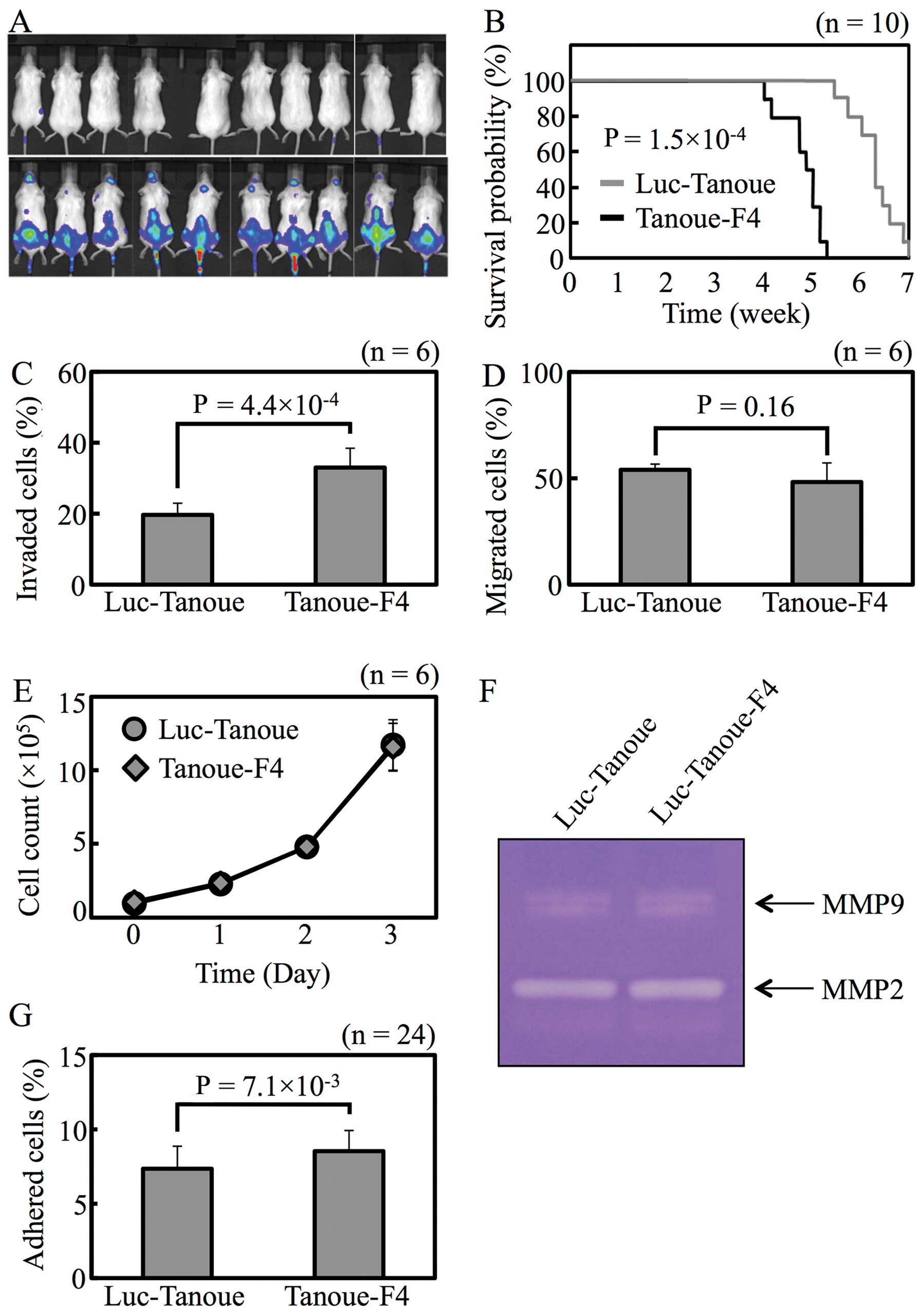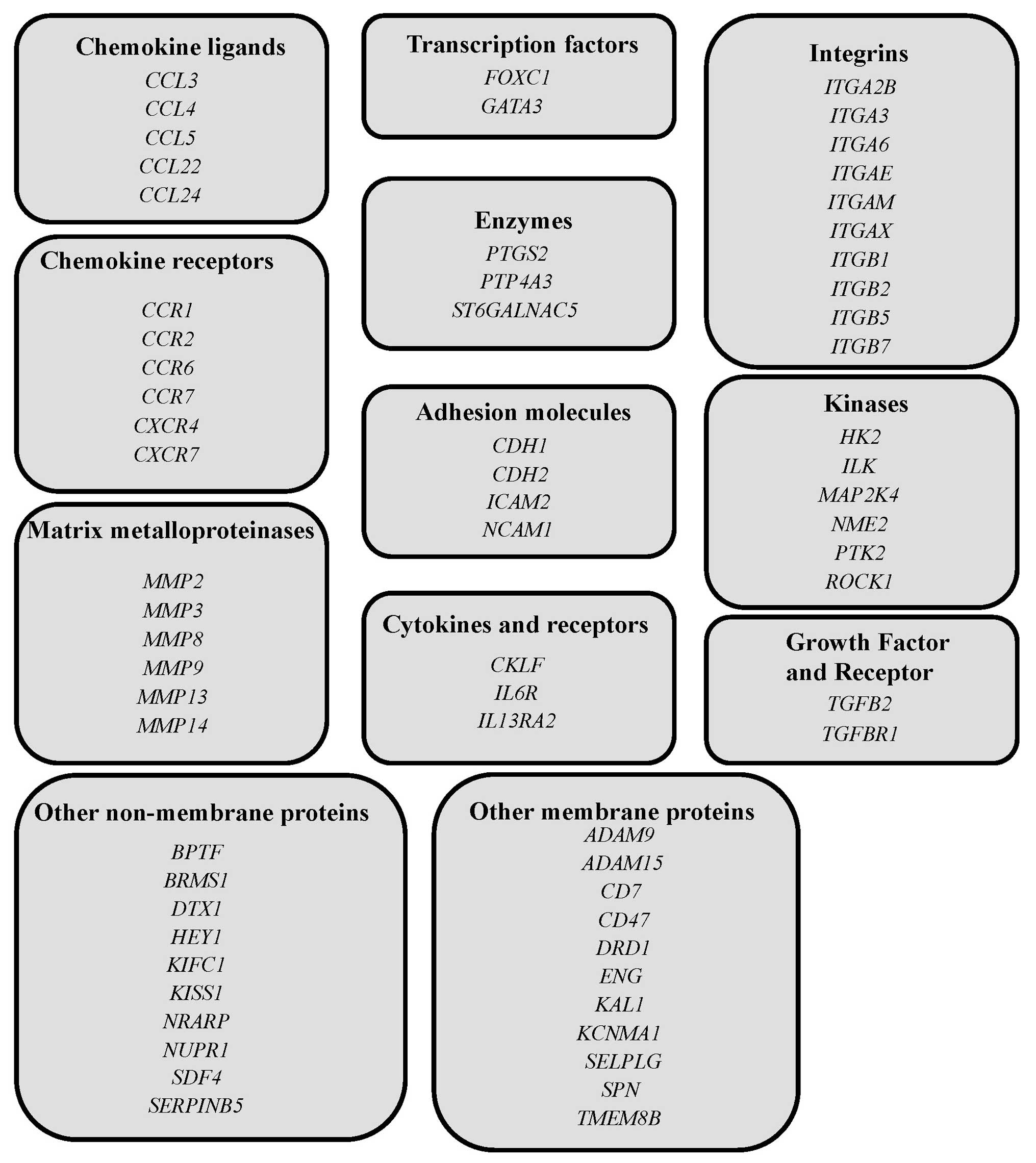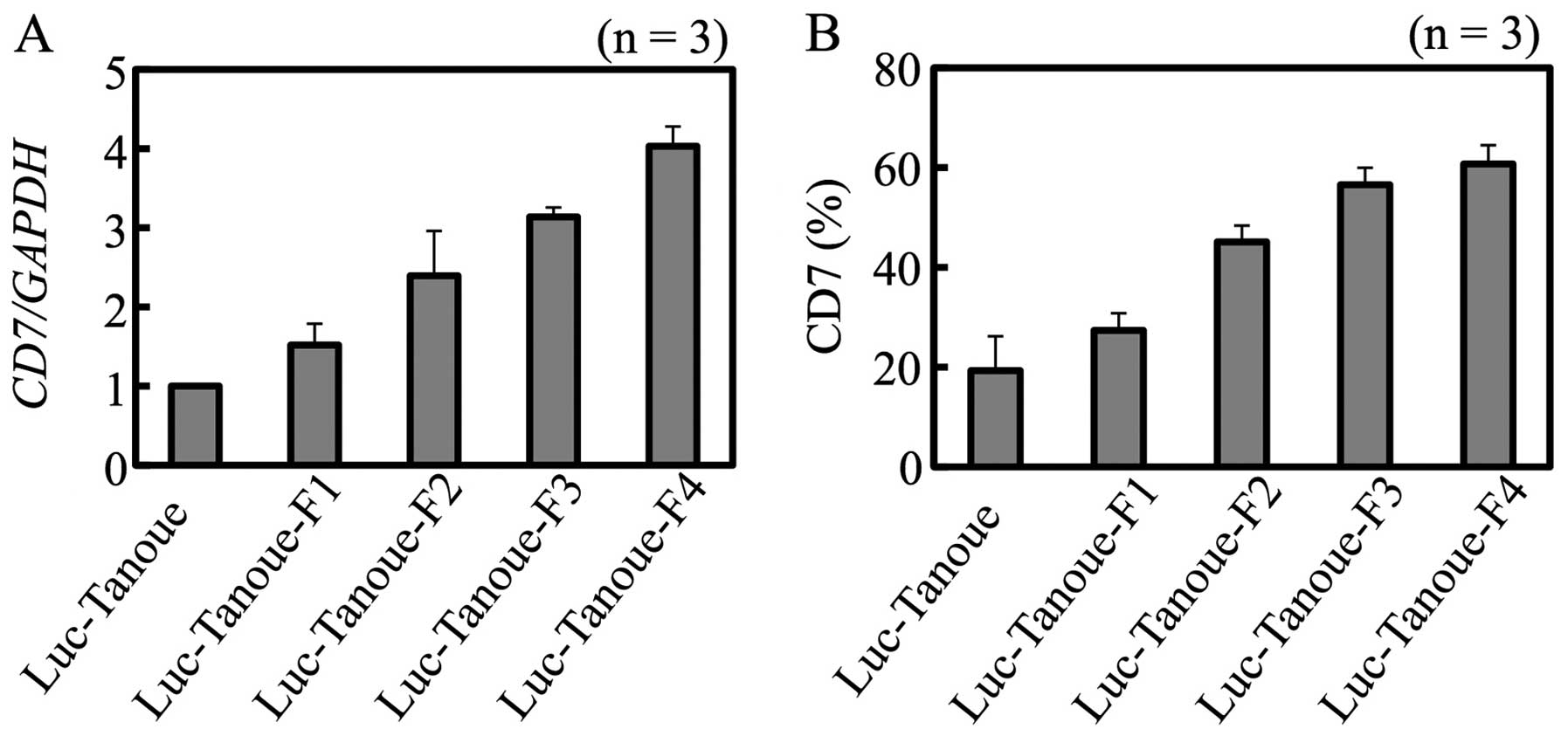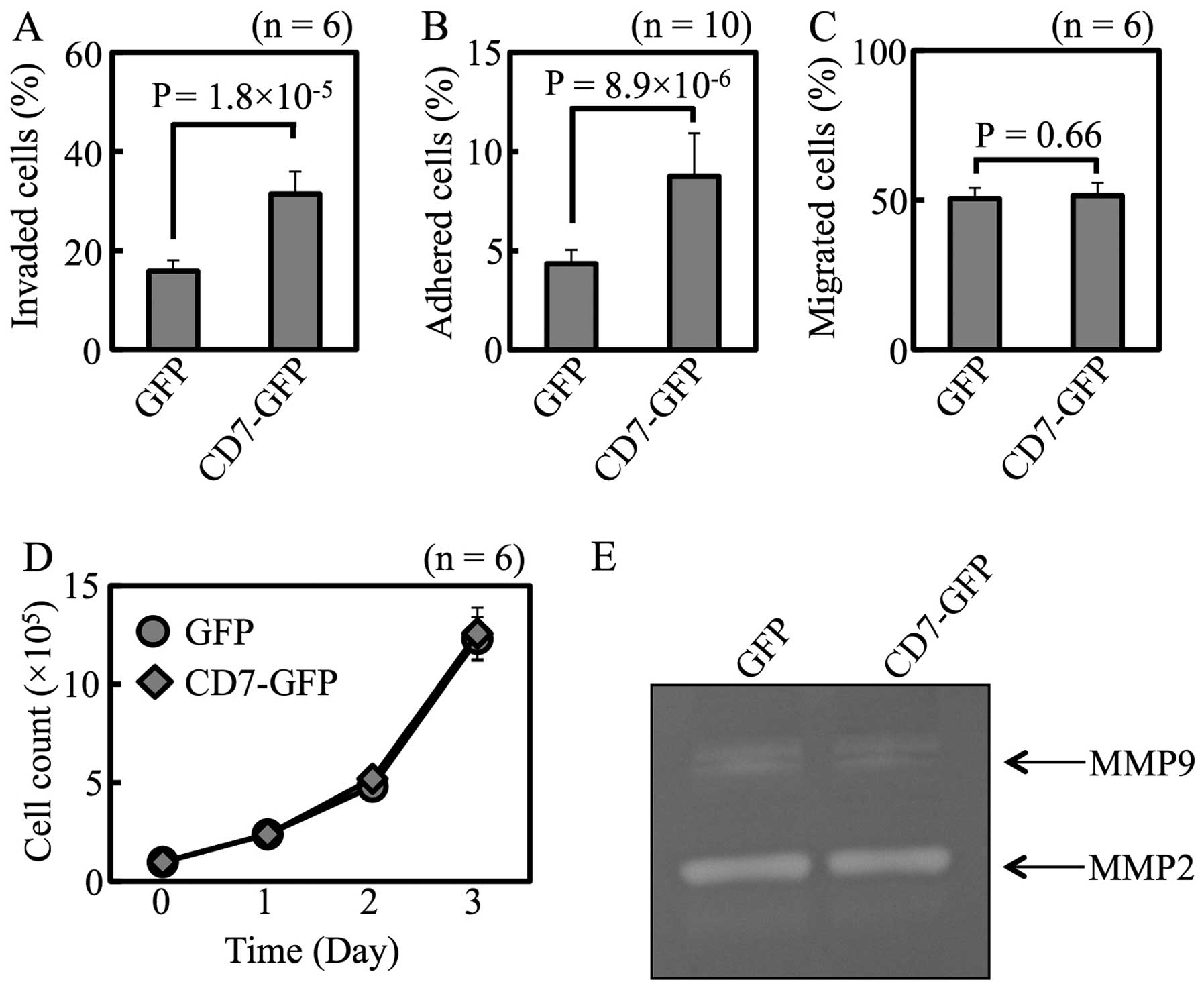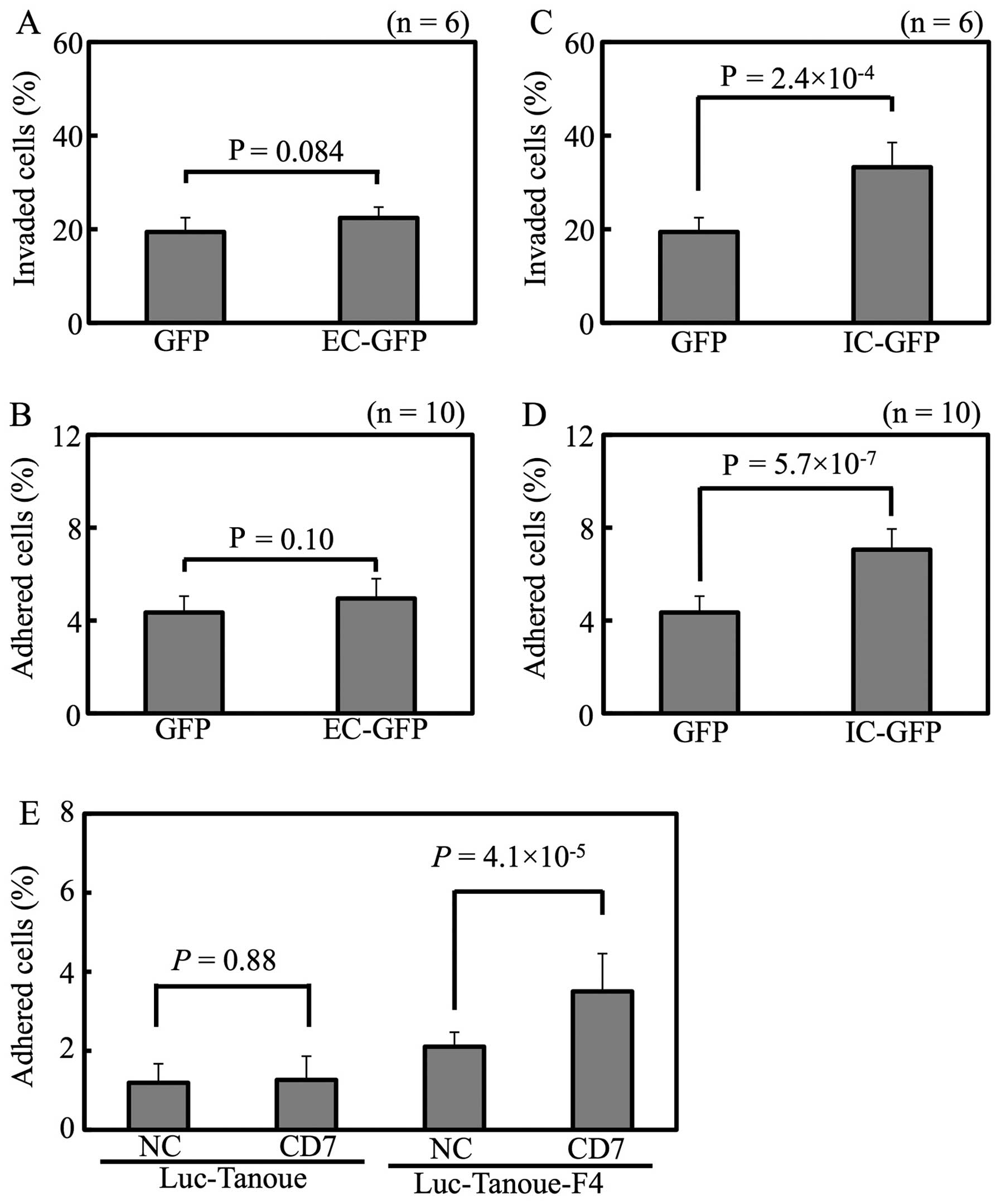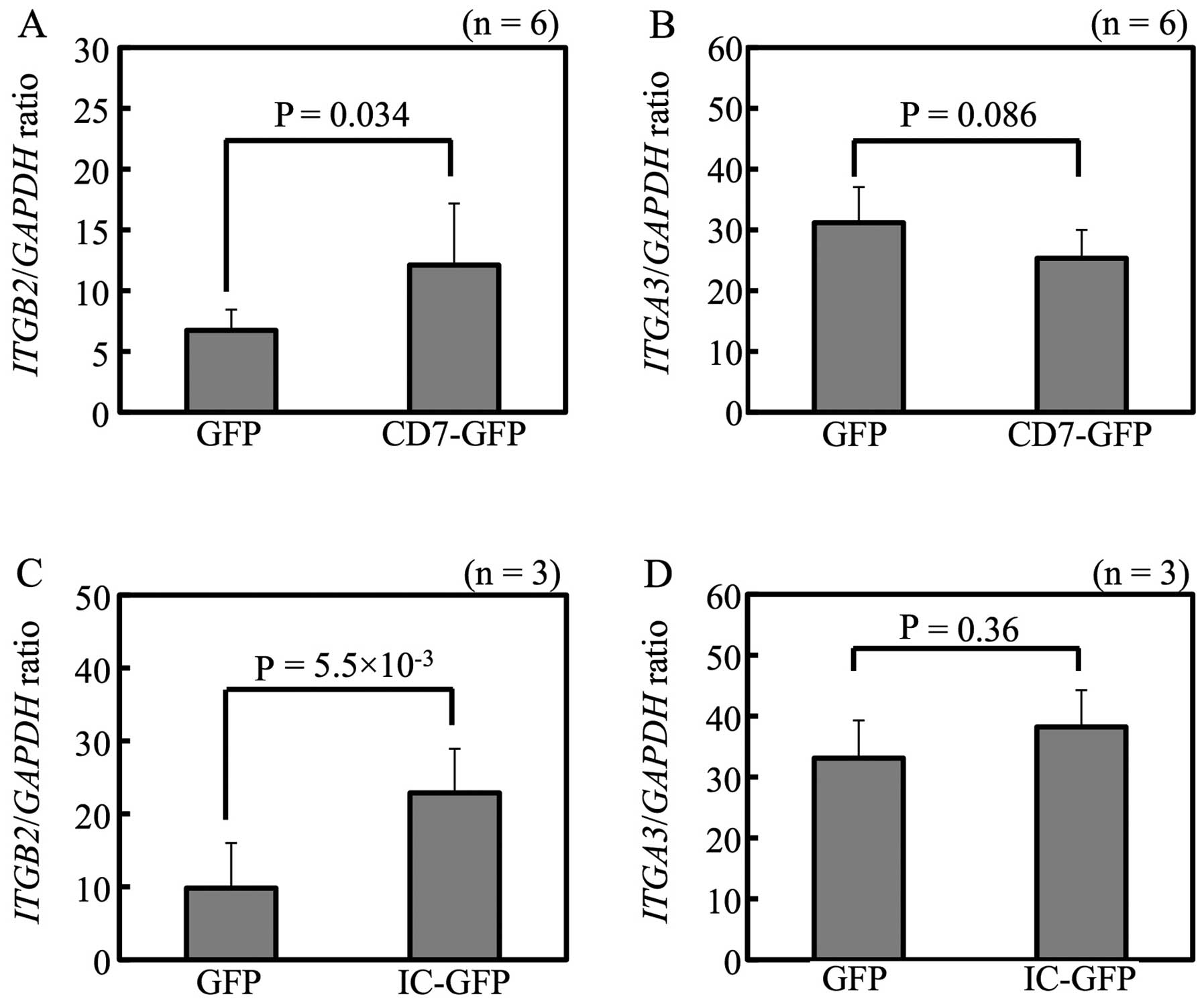|
1
|
Pui CH and Evans WE: Acute lymphoblastic
leukemia. N Engl J Med. 339:605–615. 1998. View Article : Google Scholar : PubMed/NCBI
|
|
2
|
Schrappe M, Nachman J, Hunger S, et al:
Educational symposium on long-term results of large prospective
clinical trials for childhood acute lymphoblastic leukemia
(1985–2000). Leukemia. 24:253–254. 2010.PubMed/NCBI
|
|
3
|
Pui CH, Robison LL and Look AT: Acute
lymphoblastic leukaemia. Lancet. 371:1030–1043. 2008. View Article : Google Scholar : PubMed/NCBI
|
|
4
|
Schrappe M, Reiter A, Ludwig WD, et al:
Improved outcome in childhood acute lymphoblastic leukemia despite
reduced use of anthracyclines and cranial radiotherapy: results of
trial ALL-BFM 90. German-Austrian-Swiss ALL-BFM Study Group. Blood.
95:3310–3322. 2000.
|
|
5
|
Lazarus HM, Richards SM, Chopra R, et al:
Central nervous system involvement in adult acute lymphoblastic
leukemia at diagnosis: results from the international ALL trial MRC
UKALL XII/ECOG E2993. Blood. 108:465–472. 2006. View Article : Google Scholar
|
|
6
|
Reiter A, Schrappe M, Ludwig WD, et al:
Chemotherapy in 998 unselected childhood acute lymphoblastic
leukemia patients. Results and conclusions of the multicenter trial
ALL-BFM 86. Blood. 84:3122–3133. 1994.
|
|
7
|
Jacobs JE and Hastings C: Isolated
extramedullary relapse in childhood acute lymphocytic leukemia.
Curr Hematol Malig Rep. 5:185–191. 2010. View Article : Google Scholar : PubMed/NCBI
|
|
8
|
Annels NE, Willemze AJ, van der Velden VH,
et al: Possible link between unique chemokine and homing receptor
expression at diagnosis and relapse location in a patient with
childhood T-ALL. Blood. 103:2806–2808. 2004. View Article : Google Scholar : PubMed/NCBI
|
|
9
|
Langley RR and Fidler IJ: Tumor cell-organ
microenvironment interactions in the pathogenesis of cancer
metastasis. Endocr Rev. 28:297–321. 2007. View Article : Google Scholar : PubMed/NCBI
|
|
10
|
Crazzolara R, Kreczy A, Mann G, et al:
High expression of the chemokine receptor CXCR4 predicts
extramedullary organ infiltration in childhood acute lymphoblastic
leukaemia. Br J Haematol. 115:545–553. 2001. View Article : Google Scholar
|
|
11
|
Kuittinen O, Savolainen ER, Koistinen P,
Mottonen M and Turpeenniemi-Hujanen T: MMP-2 and MMP-9 expression
in adult and childhood acute lymphatic leukemia (ALL). Leuk Res.
25:125–131. 2001. View Article : Google Scholar : PubMed/NCBI
|
|
12
|
Mielcarek M, Sperling C, Schrappe M, Meyer
U, Riehm H and Ludwig WD: Expression of intercellular adhesion
molecule 1 (ICAM-1) in childhood acute lymphoblastic leukaemia:
correlation with clinical features and outcome. Br J Haematol.
96:301–307. 1997. View Article : Google Scholar
|
|
13
|
Ravandi F, Cortes J, Estrov Z, et al: CD56
expression predicts occurrence of CNS disease in acute
lymphoblastic leukemia. Leuk Res. 26:643–649. 2002. View Article : Google Scholar : PubMed/NCBI
|
|
14
|
Schneider P, Costa O, Legrand E, et al: In
vitro secretion of matrix metalloproteinase-9 is a prognostic
marker in childhood acute lymphoblastic leukemia. Leuk Res.
34:24–31. 2010. View Article : Google Scholar : PubMed/NCBI
|
|
15
|
Wu S, Fischer L, Gokbuget N, et al:
Expression of interleukin 15 in primary adult acute lymphoblastic
leukemia. Cancer. 116:387–392. 2010. View Article : Google Scholar : PubMed/NCBI
|
|
16
|
Buonamici S, Trimarchi T, Ruocco MG, et
al: CCR7 signalling as an essential regulator of CNS infiltration
in T-cell leukaemia. Nature. 459:1000–1004. 2009. View Article : Google Scholar : PubMed/NCBI
|
|
17
|
Holland M, Castro FV, Alexander S, et al:
RAC2, AEP, and ICAM1 expression are associated with CNS disease in
a mouse model of pre-B childhood acute lymphoblastic leukemia.
Blood. 118:638–649. 2011. View Article : Google Scholar : PubMed/NCBI
|
|
18
|
Castro FV, McGinn OJ, Krishnan S, et al:
5T4 oncofetal antigen is expressed in high risk of relapse
childhood pre-B acute lymphoblastic leukemia and is associated with
a more invasive and chemotactic phenotype. Leukemia. 26:1487–1498.
2012. View Article : Google Scholar
|
|
19
|
Kuribayashi K, Finnberg N and El-Deiry WS:
Studying p53-dependent cell death in vitro and in vivo. Methods
Enzymol. 446:159–173. 2008. View Article : Google Scholar : PubMed/NCBI
|
|
20
|
Sempowski GD, Lee DM, Kaufman RE and
Haynes BF: Structure and function of the CD7 molecule. Crit Rev
Immunol. 19:331–348. 1999.PubMed/NCBI
|
|
21
|
Aruffo A and Seed B: Molecular cloning of
two CD7 (T-cell leukemia antigen) cDNAs by a COS cell expression
system. EMBO J. 6:3313–3316. 1987.PubMed/NCBI
|
|
22
|
Lazarovits AI, Osman N, Le Feuvre CE, Ley
SC and Crumpton MJ: CD7 is associated with CD3 and CD45 on human T
cells. J Immunol. 153:3956–3966. 1994.
|
|
23
|
Chan AS, Mobley JL, Fields GB and Shimizu
Y: CD7-mediated regulation of integrin adhesiveness on human T
cells involves tyrosine phosphorylation-dependent activation of
phosphatidylinositol 3-kinase. J Immunol. 159:934–942. 1997.
|
|
24
|
Lee DM, Patel DD, Pendergast AM and Haynes
BF: Functional association of CD7 with phosphatidylinositol
3-kinase: interaction via a YEDM motif. Int Immunol. 8:1195–1203.
1996. View Article : Google Scholar : PubMed/NCBI
|
|
25
|
Rabinowich H, Lin WC, Herberman RB and
Whiteside TL: Signaling via CD7 molecules on human NK cells.
Induction of tyrosine phosphorylation and beta 1 integrin-mediated
adhesion to fibronectin. J Immunol. 153:3504–3513. 1994.PubMed/NCBI
|
|
26
|
Jung LK, Roy AK and Chakkalath HR: CD7
augments T cell proliferation via the interleukin-2 autocrine
pathway. Cell Immunol. 141:189–199. 1992. View Article : Google Scholar : PubMed/NCBI
|
|
27
|
Hou Z, Leta E and Jung LK: Cross-linking
CD7 on myeloblasts results in granulocyte-macrophage
colony-stimulating factor production. Blood. 88:124–129.
1996.PubMed/NCBI
|
|
28
|
Rabinowich H, Pricop L, Herberman RB and
Whiteside TL: Expression and function of CD7 molecule on human
natural killer cells. J Immunol. 152:517–526. 1994.PubMed/NCBI
|
|
29
|
Shimizu Y, van Seventer GA, Ennis E,
Newman W, Horgan KJ and Shaw S: Crosslinking of the T cell-specific
accessory molecules CD7 and CD28 modulates T cell adhesion. J Exp
Med. 175:577–582. 1992. View Article : Google Scholar : PubMed/NCBI
|
|
30
|
Del Poeta G, Stasi R, Venditti A, et al:
Prognostic value of cell marker analysis in de novo acute myeloid
leukemia. Leukemia. 8:388–394. 1994.PubMed/NCBI
|
|
31
|
Jensen AW, Hokland M, Jorgensen H,
Justesen J, Ellegaard J and Hokland P: Solitary expression of CD7
among T-cell antigens in acute myeloid leukemia: identification of
a group of patients with similar T-cell receptor beta and delta
rearrangements and course of disease suggestive of poor prognosis.
Blood. 78:1292–1300. 1991.
|
|
32
|
Kita K, Miwa H, Nakase K, et al: Clinical
importance of CD7 expression in acute myelocytic leukemia. The
Japan Cooperative Group of Leukemia/Lymphoma. Blood. 81:2399–2405.
1993.PubMed/NCBI
|
|
33
|
Saxena A, Sheridan DP, Card RT, McPeek AM,
Mewdell CC and Skinnider LF: Biologic and clinical significance of
CD7 expression in acute myeloid leukemia. Am J Hematol. 58:278–284.
1998. View Article : Google Scholar : PubMed/NCBI
|
|
34
|
Yumura-Yagi K, Hara J, Kurahashi H, et al:
Clinical significance of CD7-positive stem cell leukemia. A
distinct subtype of mixed lineage leukemia. Cancer. 68:2273–2280.
1991. View Article : Google Scholar : PubMed/NCBI
|
|
35
|
Chang H, Yeung J, Brandwein J and Yi QL:
CD7 expression predicts poor disease free survival and
post-remission survival in patients with acute myeloid leukemia and
normal karyotype. Leuk Res. 31:157–162. 2007. View Article : Google Scholar
|
|
36
|
Yumura-Yagi K, Ishihara S, Hara J, et al:
Poor prognosis of mediastinal non-Hodgkin’s lymphoma with an
immature phenotype of CD2+, CD7 (or CD5)+,
CD3−, CD4−, and CD8. Cancer. 63:671–674.
1989.
|
|
37
|
Hussein S, Gill KZ, Sireci AN, et al:
Aberrant T-cell antigen expression in B lymphoblastic leukaemia. Br
J Haematol. 155:449–456. 2011. View Article : Google Scholar : PubMed/NCBI
|
|
38
|
Kurtzberg J, Waldmann TA, Davey MP, et al:
CD7+, CD4−, CD8− acute leukemia: a
syndrome of malignant pluripotent lymphohematopoietic cells. Blood.
73:381–390. 1989.
|
|
39
|
Chan AS, Reynolds PJ and Shimizu Y:
Tyrosine kinase activity associated with the CD7 antigen:
correlation with regulation of T cell integrin function. Eur J
Immunol. 24:2602–2608. 1994. View Article : Google Scholar : PubMed/NCBI
|
|
40
|
Kishimoto TK, Hollander N, Roberts TM,
Anderson DC and Springer TA: Heterogeneous mutations in the beta
subunit common to the LFA-1, Mac-1, and p150,95 glycoproteins cause
leukocyte adhesion deficiency. Cell. 50:193–202. 1987. View Article : Google Scholar
|
|
41
|
Mathew EC, Shaw JM, Bonilla FA, Law SK and
Wright DA: A novel point mutation in CD18 causing the expression of
dysfunctional CD11/CD18 leucocyte integrins in a patient with
leucocyte adhesion deficiency (LAD). Clin Exp Immunol. 121:133–138.
2000. View Article : Google Scholar : PubMed/NCBI
|
|
42
|
Kling D, Fingerle J and Harlan JM:
Inhibition of leukocyte extravasation with a monoclonal antibody to
CD18 during formation of experimental intimal thickening in rabbit
carotid arteries. Arterioscler Thromb. 12:997–1007. 1992.
View Article : Google Scholar
|
|
43
|
Walzog B, Scharffetter-Kochanek K and
Gaehtgens P: Impairment of neutrophil emigration in CD18-null mice.
Am J Physiol. 276:G1125–G11130. 1999.PubMed/NCBI
|
|
44
|
Cohen S, Haimovich J and Hollander N:
Anti-idiotype x anti-LFA-1 bispecific antibodies inhibit metastasis
of B cell lymphoma. J Immunol. 170:2695–2701. 2003. View Article : Google Scholar : PubMed/NCBI
|
|
45
|
Harning R, Myers C and Merluzzi VJ:
Monoclonal antibodies to lymphocyte function-associated antigen-1
inhibit invasion of human lymphoma and metastasis of murine
lymphoma. Clin Exp Metastasis. 11:337–342. 1993. View Article : Google Scholar
|
|
46
|
Zahalka MA, Okon E and Naor D: Blocking
lymphoma invasiveness with a monoclonal antibody directed against
the beta-chain of the leukocyte adhesion molecule (CD18). J
Immunol. 150:4466–4477. 1993.PubMed/NCBI
|















